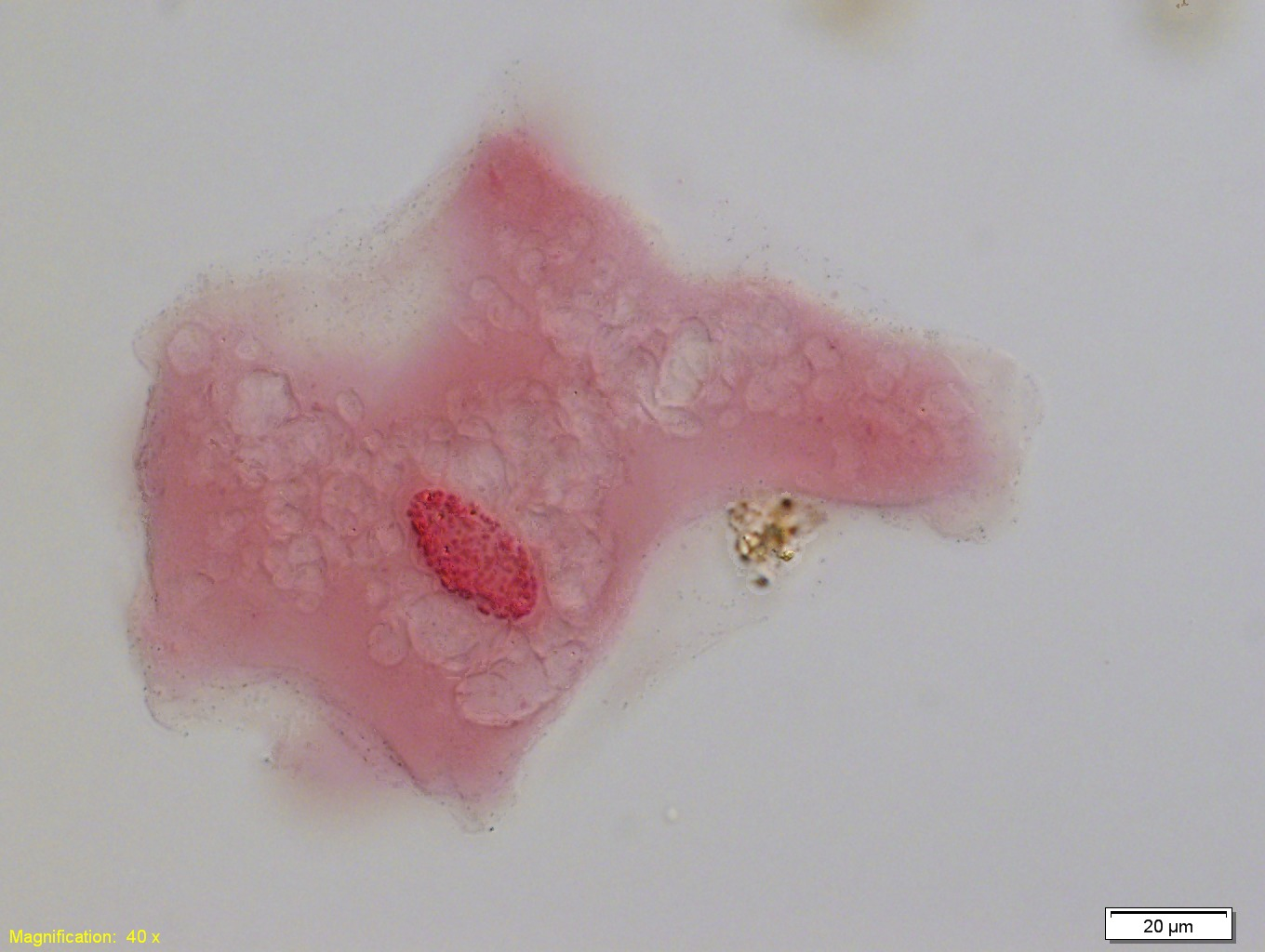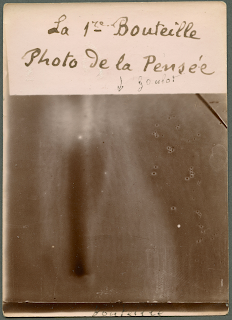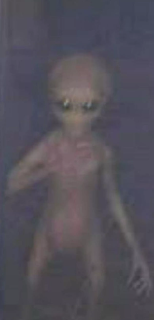When trying to find out more about Louis Darget’s V-rays, (vital rays) I discovered that he was into 'dream photography', and as I have for a long time been interested in photographs of ectoplasm, decided to find out more. I usually find photographs of ectoplasm very funny, they are so obviously fakes and often use just bits of muslim stuffed up noses or into mouths, to effect their 'mystery', but they must have convinced some people and therein lies the interest for me; why and how are people 'convinced' of psychic meaning by such obvious fakery?
The images of ectoplasm samples above reminded me of Radiolarians which are tiny protozoa that produce intricate mineral skeletons that are the result of cells dividing into inner and outer forms of endoplasm and ectoplasm. This other more prosaic 'ectoplasm' is perhaps in terms of microscopic imagery even more unworldly, for myself though it also offered a connection between fact and fantasy and further fuelled my interest in hybridity and permeability. In fact if you look up 'ideoplasty' in Webster's dictionary it has two meanings, the first being 'modified by mental activity' such as ideoplastic factors in digestion'; the second being 'of an art form': rendered symbolic or conventional through the mental remodelling of natural subjects. 'Ideoplasty', in terms of von Schrenck-Notzing's concept of a medium's ability to form images directly from the mind, no longer being even written up as an old defunct dictionary definition.

In the image above of an amoeba the darker pink blob is the nucleus and the rest of the cell's body is the cytoplasm. There are lots of plasm words used to describe a cell. For instance the whole thing is made up of protoplasm. If you exclude the nucleus the remaining protoplasm is called the cytoplasm. The cytoplasm is itself composed of the endoplasm, which is the stuff you see and though not visible, the ectoplasm lies just inside the plasma membrane and is the outer, more viscous region of the cytoplasm. A sort of invisible skin that sits below the membrane. Ectoplasm provides structural support to the cell and helps maintain its shape and is involved in processes such as cell movement and the formation of cell extensions like pseudopodia in amoeboid cells. The cell membrane is the outer boundary of the cell responsible for regulating the passage of substances in and out of it, whilst the ectoplasm provides structural support and facilitates cell movement in the amoeba.
I like to think of 'dream photography' as a form of drawing, as it really is 'drawing with light' and is concerned very much with the way we give meaning to the things we cant see very well, or are usually unseen. I particularly like the crazy way that Louis Darget set about making his dream photographs. For instance in order to make the image below, Mme. Darget was told to hold a photographic plate about an inch in front of her face in darkness. Eventually she would fall asleep. She would awaken as the cool, smooth plate pressed against her face because it had been dropped as she dozed off. Louis Darget would then take the plate away and develop it. In the case of the image below, he decided that his wife must have been dreaming of an eagle as she fell asleep.
In the early days of photography, many believed and hoped that the camera would prove more efficient than the human eye in capturing the unseen. Spiritualists and animists of the nineteenth century seized on the new technology as a method of substantiating the existence of supernatural beings and happenings as well being a tool that could visualise those things that only we can see in the mind, such as thought dreams or memories.
Thoughtography or psychic photography, (nensha in Japan) is the claimed ability to 'burn' images from the mind onto photographic film by parapsychic means. In the film 'The Ring', which was a remake of the Japanese film of the same name, a similar idea was introduced, which was called 'projected thermography'. However when we draw from our imagination, surely this is what we do. We 'burn' the images that are emerging from our minds into the materials of their making. However as we make an image, part of the process is a dialogue with the materials of the image's making, therefore what was in the mind, as it is embodied into a new material presence, is also 'in the material' or 'of the material' of its making. This is a symbiotic emergence. A fact that for myself is wonderful, as it is a sort of dance with the world and yourself.
One of the first books to mention "psychic photography" was The New Photography (1896) by Arthur Brunel Chatwood, who described experiments where the "image of objects on the retina of the human eye might so affect it that a photograph could be produced by looking at a sensitive plate." The book also has a chapter on 'Spirit Photography' and the later more esoteric chapters are a seamless extension of the earlier part of the book whereby new photography seems to be exemplified by its ability to see through things, as in the image of the frog seen below.
Within art practice it would be Surrealism that would take up the implications of these ways of developing imagery. Photo-montage techniques now becoming more sophisticated and coupled with a much more subtle understanding of psychology, artists were able to manipulate images designed to effect us in terms of their psychic resonance. The surrealists were also interested in magic and the ritual objects used in a variety of cultures to effect people's minds and as such they form a bridge between the experimentation of the late 19th century and the contemporary advances in neuroscience, whereby the mind/body relationship is being rethought.
Uri Geller's alien photograph
Most of these ideas go back to William H Mumler, an American spirit photographer who's first spirit photograph was a self-portrait which, when developed, also revealed the "spirit" of his deceased cousin. At the time a large number of people had lost relatives due to the American Civil War. They were looking for solace and his work gave them something to hold on to, a belief that the spirits of their lost ones were still out there somewhere and that they were not 'gone forever'.
 William H Mumler: Spirit photography
William H Mumler: Spirit photography
This brings me back to a familiar theme, how can we use art to reconcile ourselves with our own mortality? All this interest in invisible rays and esoteric energy flows, is perhaps driven by an inability to accept that death is just what it is. Life is such a magical thing that it is hard to believe that it just finishes. An animist would point to the fact that the life essence moves on and flows into other things and that as we rot down, we feed the vegetation that grows through us. Dream photography and its cousins being perhaps forms of vanitas or memento mori.






















No comments:
Post a Comment